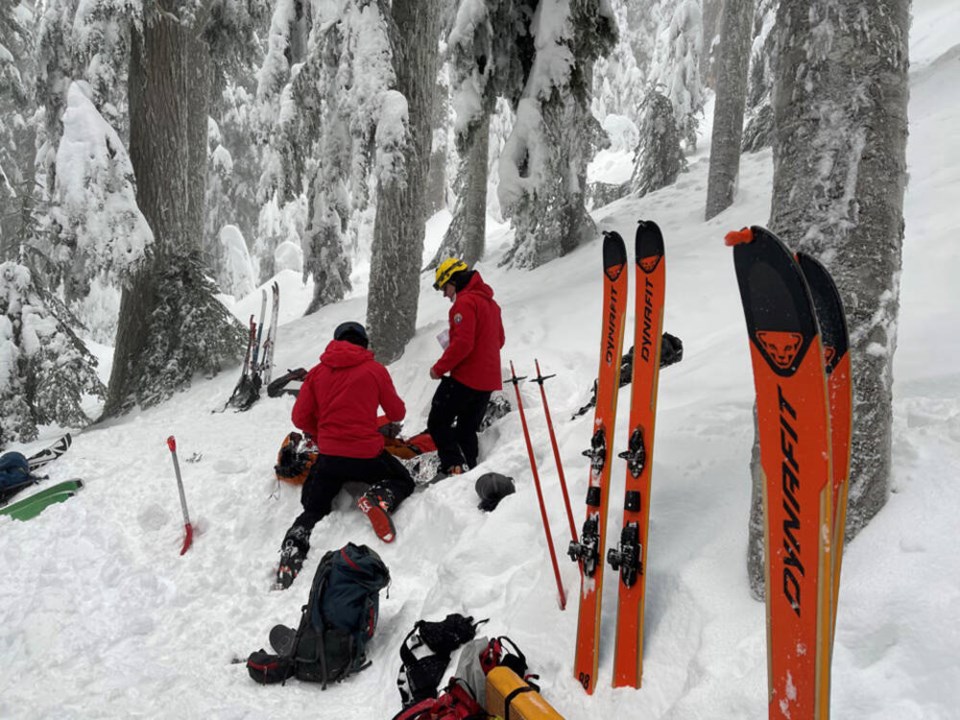Avalanche risk in the North Shore Mountains isn’t as high as it is elsewhere in the province, but that doesn’t mean we should be cavalier about safety on our backcountry trails, says North Shore Rescue’s avalanche safety officer.
A blog post published on the Avalanche Canada website last week has snowballed into public discussion of unusual conditions making risk assessments more difficult.
Throughout much of B.C. – in case anyone is planning any backcountry adventures there – the mountains are covered with deep, persistent, weak layers of snow, said North Shore Rescue volunteer AJ Maheu.
“The hard thing about persistent weak layers is the amount of uncertainty that they provide. So we’re uncertain about the snowpack, and therefore, it’s probably good to reel it in a little bit and be a little bit more conservative in our terrain choices,” he said. “If you manage to trigger one, because the layer is very deep into the snowpack, the avalanches tend to be quite a bit larger. You get into this low-probability, high-consequence scenario.”
On Monday, the province had its first avalanche fatality of 2023 when a Nelson police officer was swept up in a slide while backcountry skiing near Kaslo.
Those conditions aren’t present in the North Shore Mountains, Maheu said.
“Because the mountains are lower and warmer, and we recently got so much rain, we’ve actually lost a lot of our snowpack and we don’t really typically have that persistent weak layer issue around here,” he said.
Anyone planning to go into the North Shore backcountry in the winter should first check the hazard rating with Avalanche Canada, which takes into account the likelihood of a slide as well as the expected size. And anyone crossing avalanche terrain here should be carrying, at minimum, an avalanche transceiver, probe and shovel as well as a first aid kit, some means of communicating for help and enough supplies to keep you alive until rescuers arrive, Maheu said.
The North Shore Mountains have their own risk factors that tend to go underestimated, Maheu added. Our mountains are steep and they also are littered with “terrain traps” that magnify the deadly nature of an avalanche – trees, cliffs, creeks, gullies.
“There’s a lot of places where even a very small avalanche could actually have some pretty significant consequence not necessarily because of the mass of snow that’s moving, but because of where it’s taking you,” he said.
Even when the risk isn’t deemed high across a wide swath of mountain top, bad luck can be a fatal force in one critical spot, Maheu noted.
The last time someone was killed in a North Shore avalanche was in 2019 when Surrey snowshoer Remigiusz Michalowski was swept over a cliff following a slide on Mount Seymour’s Runner Peak. The hazard rating at the time was listed as moderate.
Avalanche Canada tends to issue higher hazard ratings following a heavy snow on the North Shore, which means extra caution is needed when weather conditions have been changing.
The majority of avalanche-related injuries and deaths happen when the hazard rating is listed as “considerable” as opposed to “high” because people tend to carry a false sense of security, Maheu said.
“People have to maybe use a little bit of restraint and discipline,” he said.



